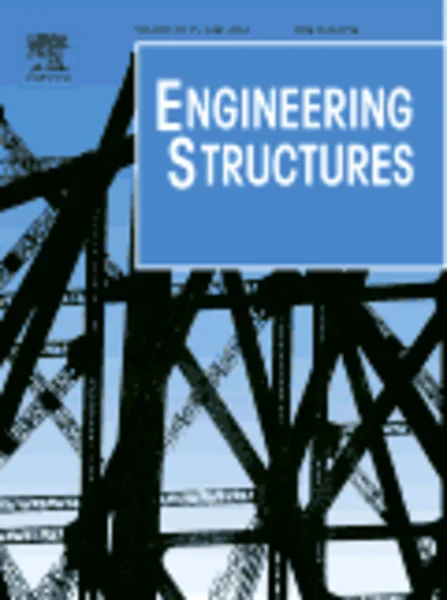-
general notes on ductility in timber structures
جزئیات بیشتر مقاله- تاریخ ارائه: 1392/07/24
- تاریخ انتشار در تی پی بین: 1392/07/24
- تعداد بازدید: 727
- تعداد پرسش و پاسخ ها: 0
- شماره تماس دبیرخانه رویداد: -
the paper discusses the implications of ductility in design of timber structures under static and dynamic loading including earthquakes. timber is a material inherently brittle in bending and in tension, unless reinforced adequately. however connections between timber members can exhibit significant ductility, if designed and detailed properly to avoid splitting. hence it is possible to construct statically indeterminate systems made of brittle timber members connected with ductile connections that behave in a ductile fashion. the brittle members, however, must be designed for the overstrength related to the strength of the ductile connections to ensure the ductile failure mechanism will take place before the failure of the brittle members. the overstrength ratio, defined as the ratio between the 95th percentile of the connection strength distribution and the analytical prediction of the characteristic connection strength, was calculated for multiple doweled connections loaded parallel to the grain based on the results of an extensive experimental programme carried out on timber splice connections with 10.65 and 11.75 mm diameter steel dowels grade 4.6. in this particular case the overstrength ratio was found to range from 1.2 to 2.1, and a value of 1.6 is recommended for ductile design. the paper illustrates the use of the elastic–perfectly plastic analysis with ductility control for a simple statically indeterminate structure and compares this approach to the fully non-linear analysis and with the more traditional linear elastic analysis. it is highlighted that plastic design should not be used for timber bridges since fatigue may lead to significant damage accumulation in the connections if plastic deformations have developed. the paper also shows that the current relative definitions of ductility, as a ratio between an ultimate deformation/displacement and the corresponding yield quantity, should be replaced by absolute definitions of ductility, for example the ultimate deformation/displacement, as the latter ones better represent the ductile structural behavior.
مقالات جدیدترین رویدادها
-
استفاده از تحلیل اهمیت-عملکرد در ارائه الگوی مدیریت خلاقیت سازمانی و ارائه راهکار جهت بهبود
-
بررسی تاثیر ارزش وجوه نقد مازاد بر ساختار سرمایه شرکت های پذیرفته شده در بورس اوراق بهادار تهران
-
بررسی تأثیر سطح افشای ریسک بر قرارداد بدهی شرکت های پذیرفته شده در بورس اوراق بهادار تهران
-
بررسی تأثیر رتبه بندی اعتباری مبتنی بر مدل امتیاز بازار نوظهور بر نقد شوندگی سهام با تأکید بر خصوصی سازی شرکت ها
-
تأثیر آمیخته بازاریابی پوشاک ایرانی بر تصویر ذهنی مشتری پوشاک ایرانی (هاکوپیان)
-
نقش چشمه های آبگرم معدنی در رونق گردشگری با تاکید بر شهرستان مشکین شهر
-
مطالعه سیاست جنایی مشارکتی ایران در پیشگیری از قاچاق کالا و ارز
-
مطالعه تجربی تاثیرات نسبت های اختلاط و سن نمونه بر مشخصات مکانیکی بتن پلاستیک با استفاده از آزمایش سه محوری
-
مرتب سازی اسپایک های عصبی با استفاده از شبکه عصبی بدون استخراج ویژگی
-
بررسی گسترش خرافات و جادوگری در ایران با تاکید بر دوران صفویه و قاجاریه
مقالات جدیدترین ژورنال ها
-
مدیریت و بررسی افسردگی دانش آموزان دختر مقطع متوسطه دوم در دروان کرونا در شهرستان دزفول
-
مدیریت و بررسی خرد سیاسی در اندیشه ی فردوسی در ادب ایران
-
واکاوی و مدیریت توصیفی قلمدان(جاکلیدی)ضریح در موزه آستان قدس رضوی
-
بررسی تاثیر خلاقیت، دانش و انگیزه کارکنان بر پیشنهادات نوآورانه کارکنان ( مورد مطالعه: هتل های 3 و 4 ستاره استان کرمان)
-
بررسی تاثیر کیفیت سیستم های اطلاعاتی بر تصمیم گیری موفق در شرکتهای تولیدی استان اصفهان (مورد مطالعه: مدیران شرکتهای تولیدی استان اصفهان)
-
جرم شناسی جنوب
-
تنقیح مناط کتاب تاریخ تشیع در غرب اسلامی پس از شانزده سال، جامعه شناسی سیاسی دولت
-
تحلیل تفسیری مفهوم «صراط مستقیم» در سوره فاتحه با تمرکز بر تفسیر المیزان علامۀ طباطبایی رحمۀ الله علیه
-
environmental and economic analysis of selected pavement preservation treatments
-
preparation and characterization of tio2 fe2o3 nanocomposite by sol gel method




سوال خود را در مورد این مقاله مطرح نمایید :